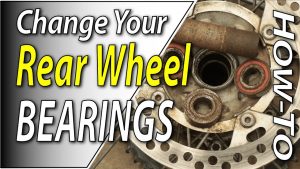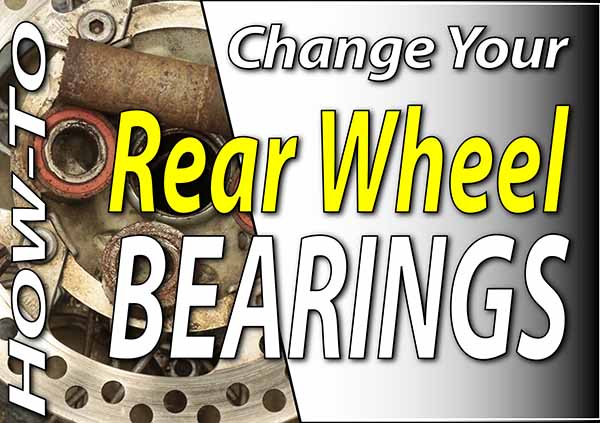
How To Replace Your Rear Wheel Bearings And Service The Hub
Changing the rear wheel bearings on your dirt bike is a relatively easy job. The only tricky part is that the bearings are a pressed fit, so to remove them from the hub, you will need fire and a precision sledgehammer.
The Tools You Will Need To Replace Your Rear Wheel Bearings
- A garage floor
- Two long 2x4s
- Socket and breaker bar for the axle nut
- Wrench for chain adjuster jam nut
- Wrench for chain adjuster
- A block of wood
- A Tire Spoon
- Bearing retainer tool (more info below)
- Drift
- A socket that matches the inner bearing race
- A socket that matches the outer bearing race
- Socket wrench extension
- Propane Torch
- Hammer
- Finishing file
- Parts cleaner
- Clean towel
- Safety glasses
- Gloves
The Rear Bearing Parts You Will Need:
A new set of bearing and seals are the only parts you will need. You can get some new rear wheel bearings on Amazon.com!
For this bearing change, I installed a new set of Factory Links bearings and seals.
I use Factory Links because their bearings are double shielded. That means I don’t have to pre-grease them, and since they are sealed, they will resist water contamination better than single shield bearings.
You Can Get All The Parts And Tools You Need At Amazon.com!
Specialty Rear Bearings Tools
The only specialty tool you might need to pick up is a bearing retainer tool. I would normally make a homemade tool for this kind of thing, but there is a really good reason not to.
The bearing retainer is made of thin and brittle metal, so using a DIY tool could easily break it. Plus, a retainer tool costs around $15, but the retainer itself costs around $20, depending on make and model.
Not only will damage to your retainer cost more money but now you have to buy a new one and sit around while your buddies go riding without you.
If you do need one for your bike, you can probably find one on Amazon.com.
Related: Just in case you need a refresher, here’s how to remove and install your front wheel too.
Pre-Service Notes
- Your rear wheel has three bearings, two on the sprocket side, and one on the brake side. Always start and end with the brake side bearing. To get a better idea of what you’re working with, learn how your rear wheel hub works first.
- If you need parts and tools, make sure to buy them here!
- Pictures with captions are after the steps below.
- If you need any help don’t hesitate to ask!
Removing Your Rear Wheel Bearings
- Remove The Rear Wheel
- Remove The Bearing Retainer
- Align your bearing retainer tool with the teeth on the bearing retainer and gently loosen it. If it does not turn, do not force it, you could break it.
- Tap the end of your wrench with a hammer until you see the retainer turn.
- Pry Out The Old Seals
- There should be a small grease lip inside the rear wheel bearing seal. Hook the seal with your tire spoon to pry it out.
- When the old seals come out, clean the seal bore.
- Dislodge The Distance Collar
- Insert your drift from the sprocket side, up to, but not touching the brake side bearing. Work your drift up and down to pull the distance collar away from the bearings.
- Remove Brake Side Rear Wheel Bearing.
- Place your wheel with the brake side up on your 2x4s, so only the rim and tire are supporting the wheel.
- Heat the hub, not the bearing, for 60 seconds. This makes the hub expand slightly, which released the pressure on the bearing.
- Flip your wheel over and align your socket to the INNER bearing race, and tap until the brake side bearing falls out.
- Do not strike the bearing too hard! The sprocket side bearings are seated against a lip inside the hub.
- Striking the inner bearing race too hard will break the sprocket side bearings, then you have to chip the outer bearing race out of the hub.
- This is annoying, and you could damage the hub.
- Repeat this process on the sprocket side rear wheel bearings
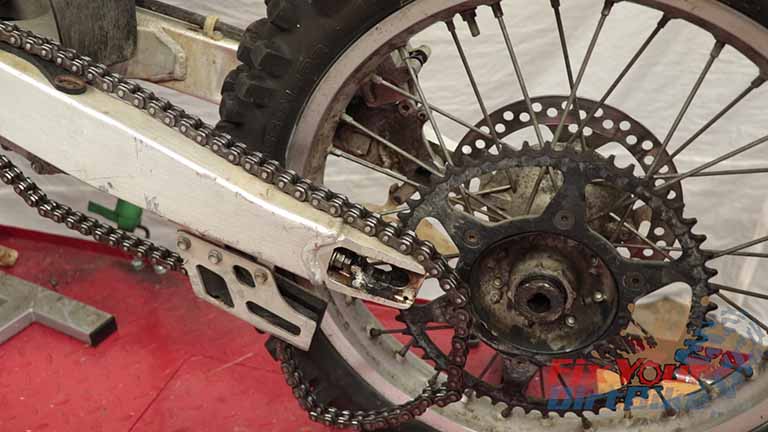
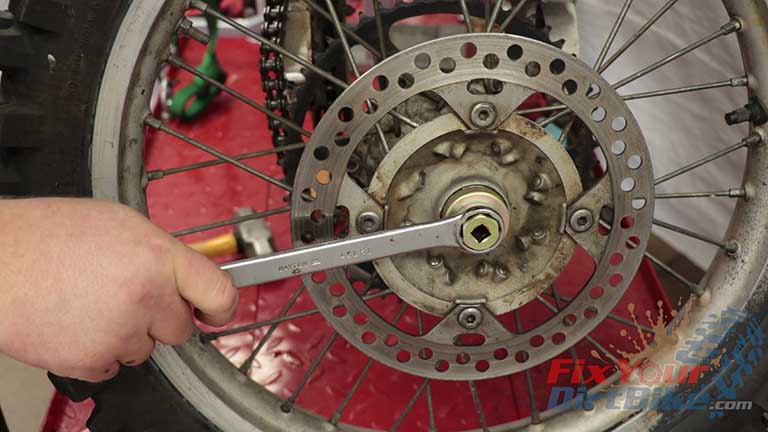
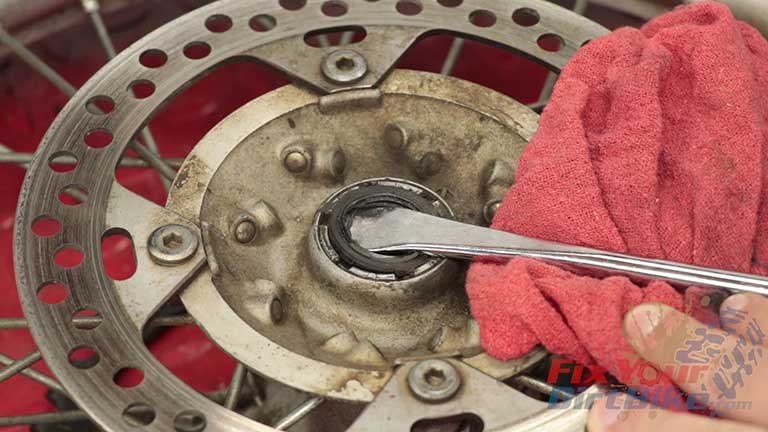
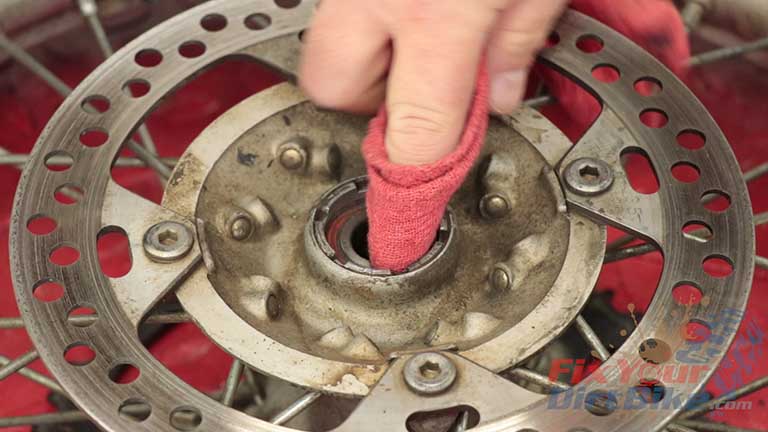
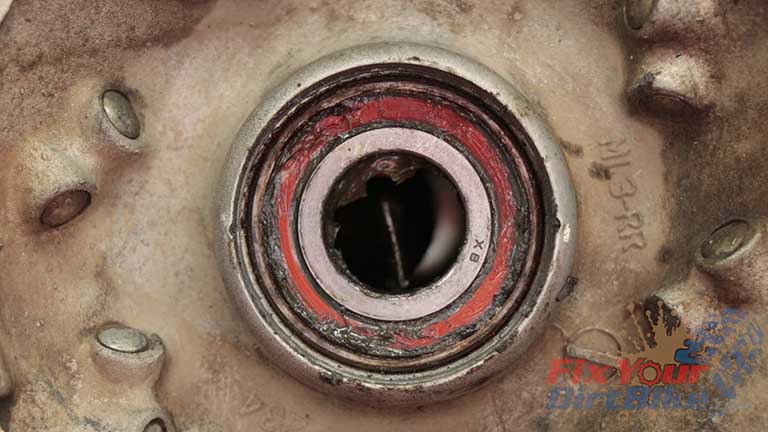
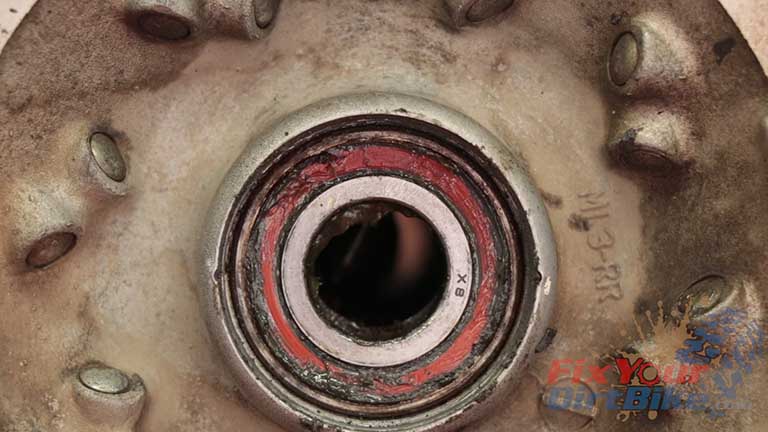
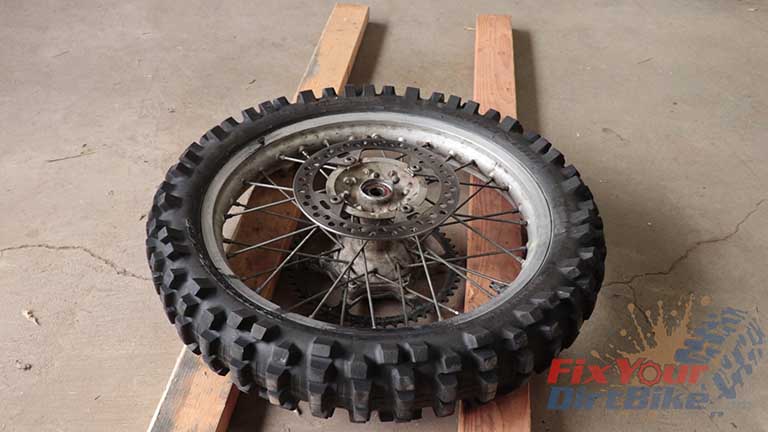
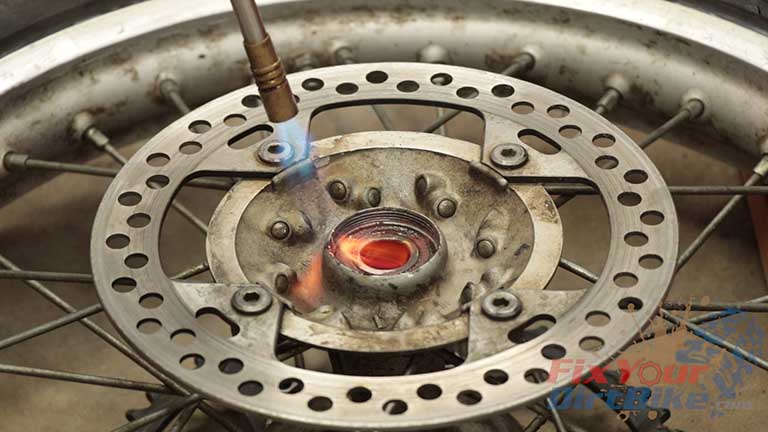
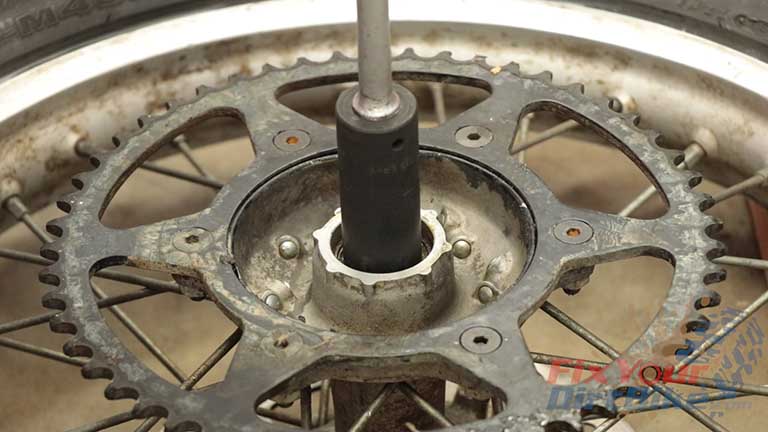
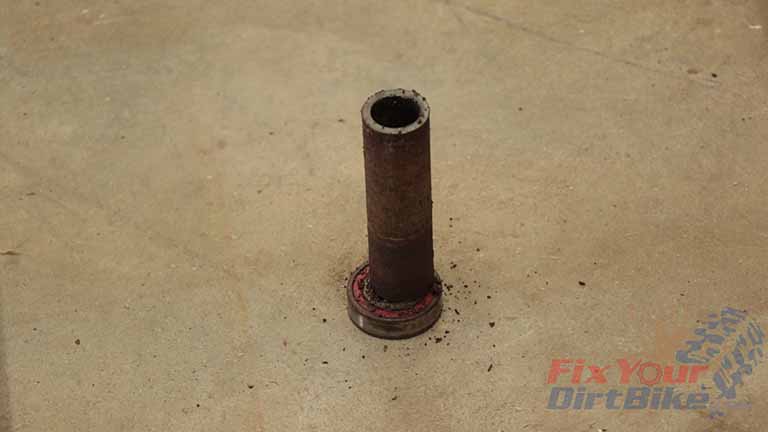
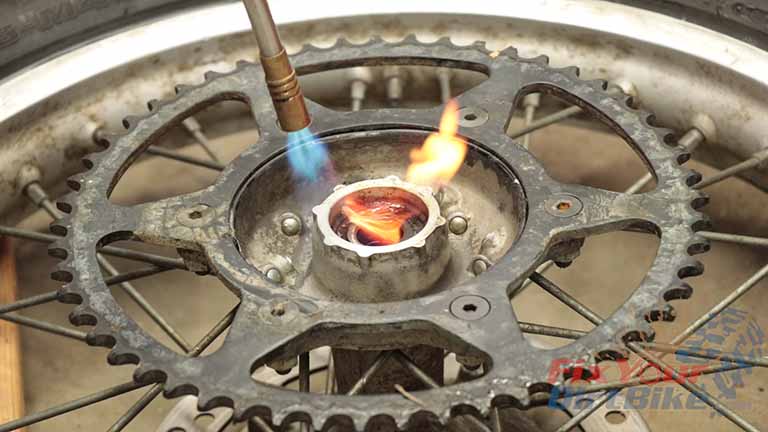
How To Service Your Rear Hub
- Clean then inspect the hub components, hub, and swing arm mounts for any signs of excessive wear or damage.
- File off any burrs or chips.
- Do not remove any metal when smoothing the ends of the hub components. The spacers and distance collar need to be an exact length to work correctly. If the ends are damaged, they need to be replaced.
- Water has contaminated this rear hub, so the distance collar and hub have some corrosion.
- If you find this on your dirt bike, file off the corrosion as much as possible without removing too much metal, then think about the importance of good seals and grease.
- Once everything is cleaned and inspected, test fit your new bearings in your hub. They are a press fit, so they should NOT slip into the bore on their own.
- If your bearings do slip into the bore, you will need to replace your hub sooner than later.
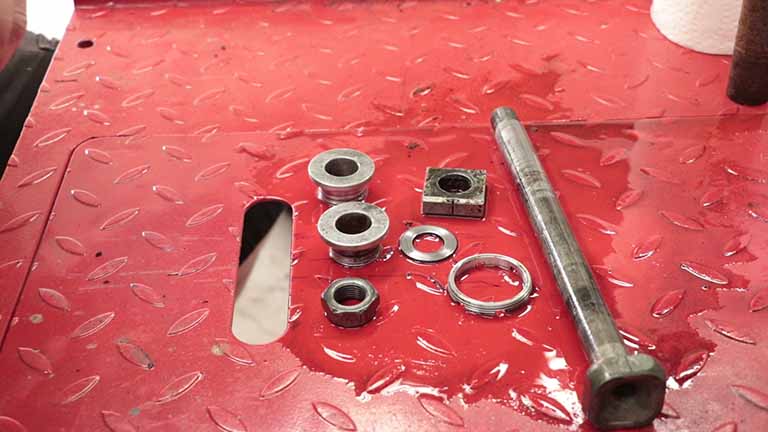
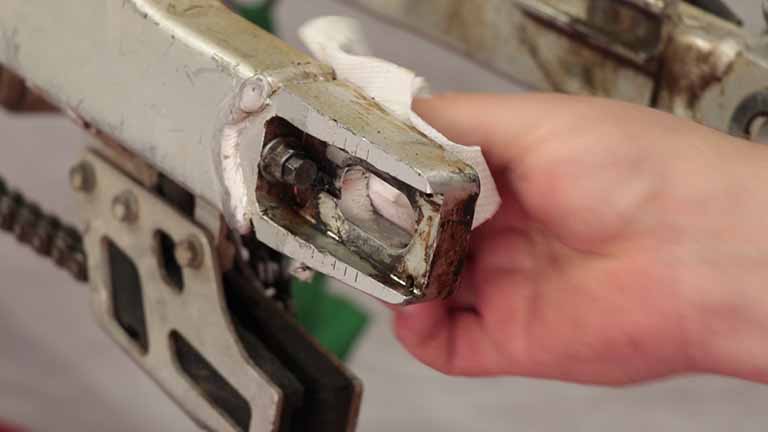
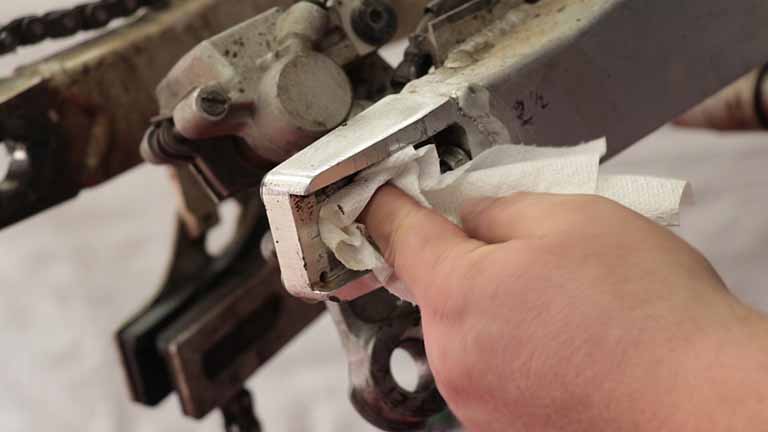
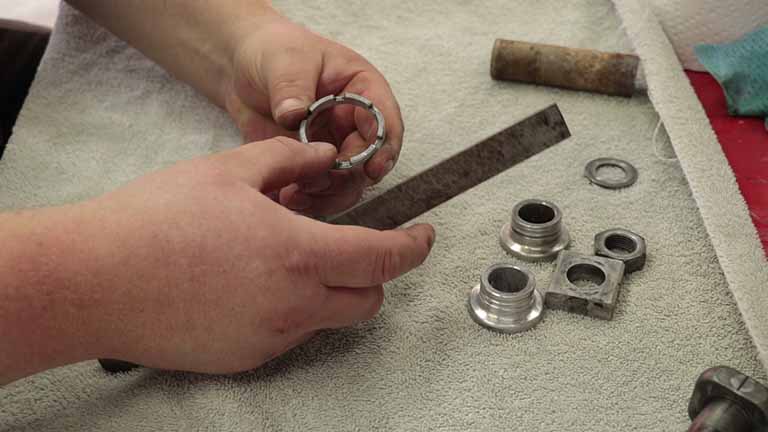
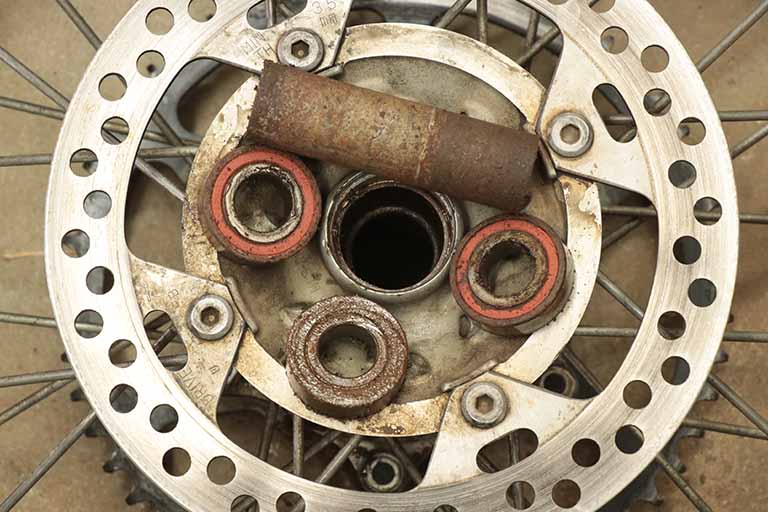
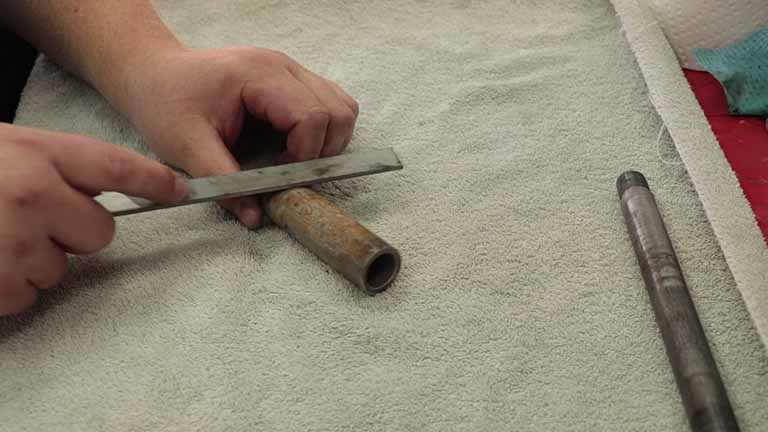
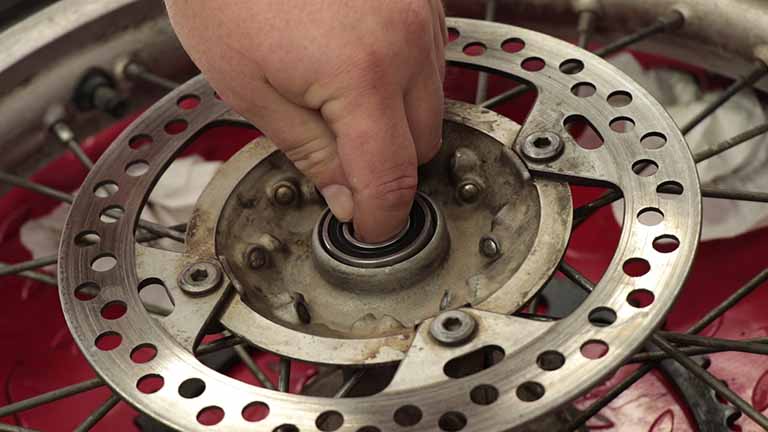
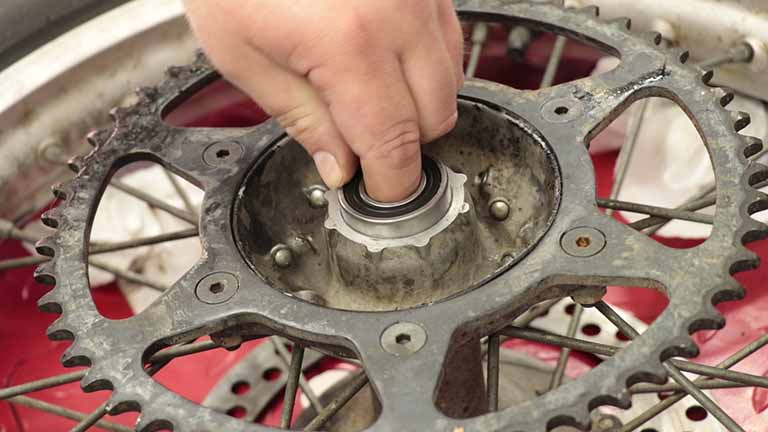
Rear Wheel Bearings Installation
- Sprocket Side Bearing Install
- Set your wheel on your block of wood with the sprocket side up, so just the hub is supported.
- Grease the bore, then align your new rear wheel bearing flush to the hub.
- Align your large socket to the OUTER bearing race, and lightly drive the bearing into the bore.
- Apply another layer of grease and repeat the hammering process with the next bearing.
- Apply another coat of grease, and drive your seal into the bore, and make sure that the seal retention spring is facing in.
- Stack your spacers and axle block on the end of the axle, and drop-in into the wheel hub, then flip your wheel over.
- The axle will is now your guide to align the distance collar with the brake side rear wheel bearing.
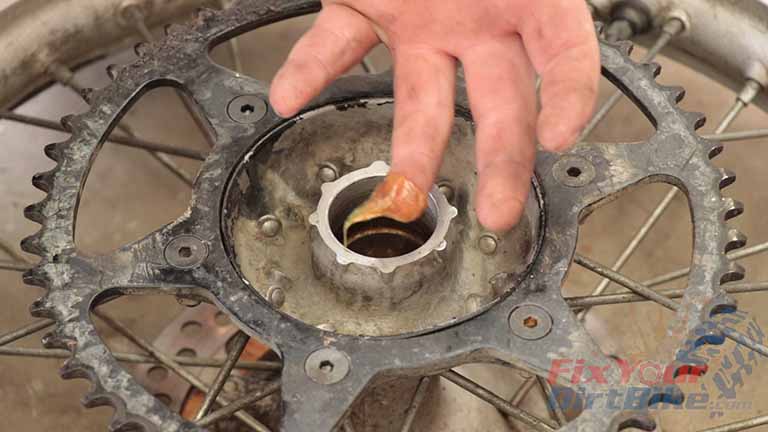
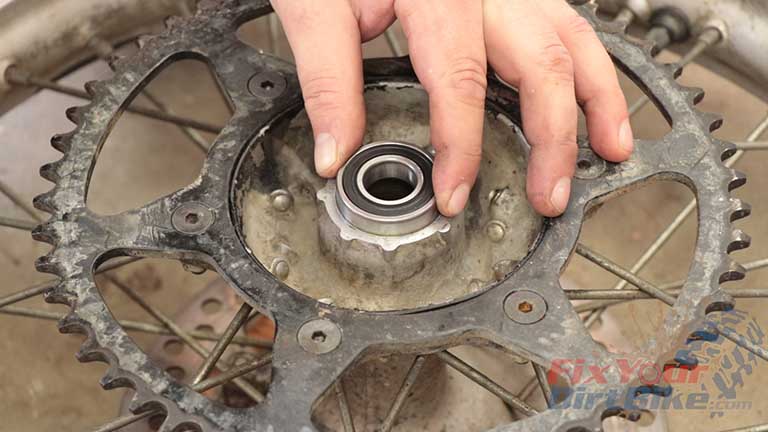
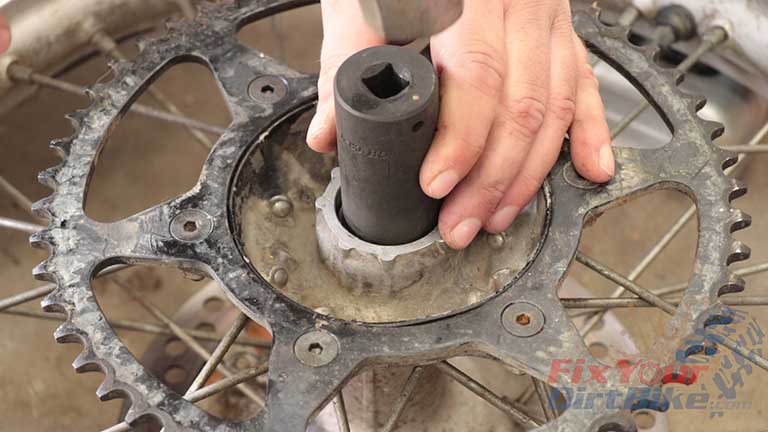
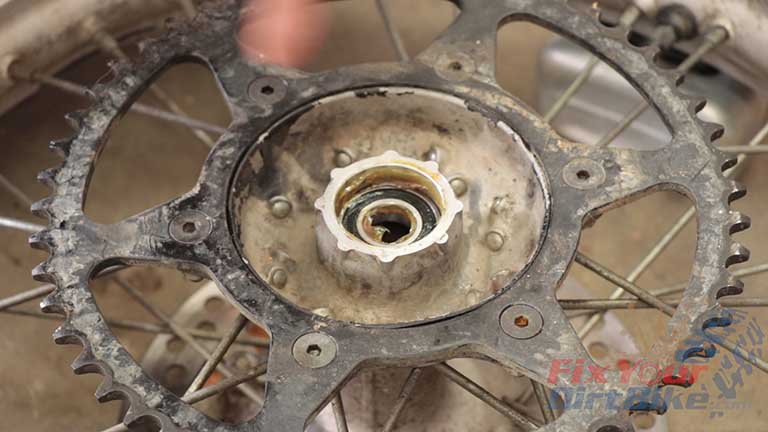
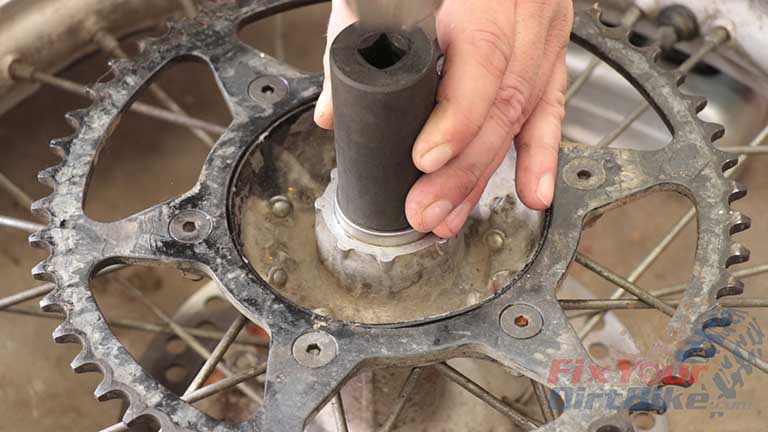
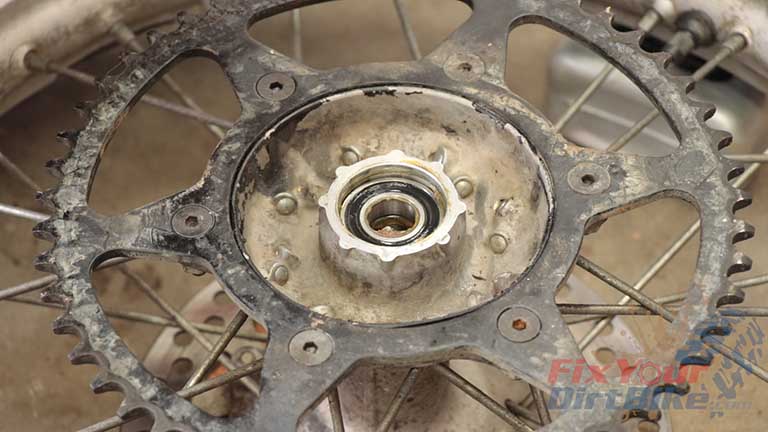
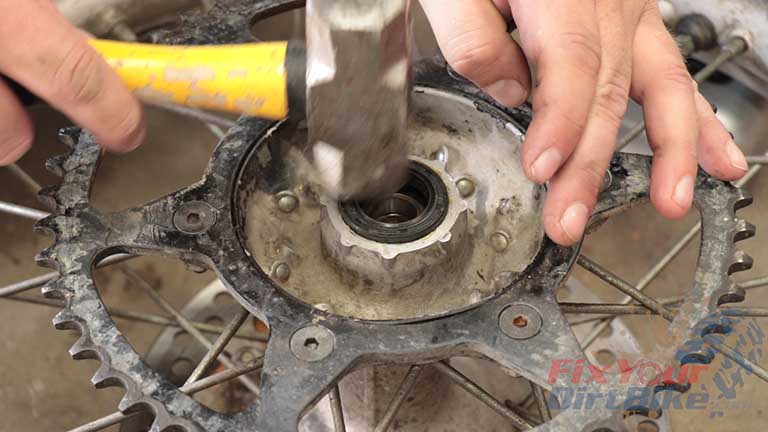
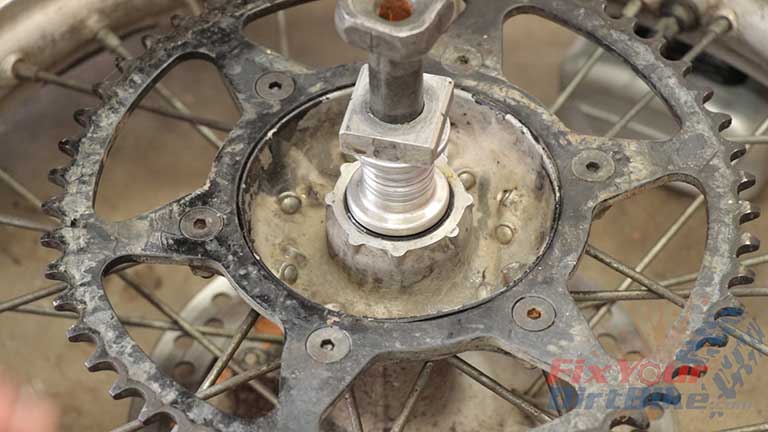
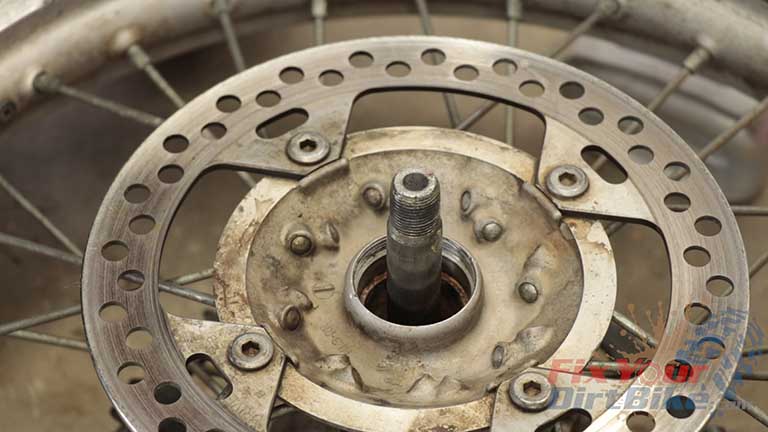
- Brake Side Bearing Install
- Apply grease to the ends of the distance collar, and drop it into the hub.
- Grease the bore, and drive in your last bearing.
- Install the bearing retainer hand tight.
- Apply your last coat of grease, and install the rear wheel bearing seal, spring side in.
- Torque the bearing retainer to the Manufacturer’s Specifications
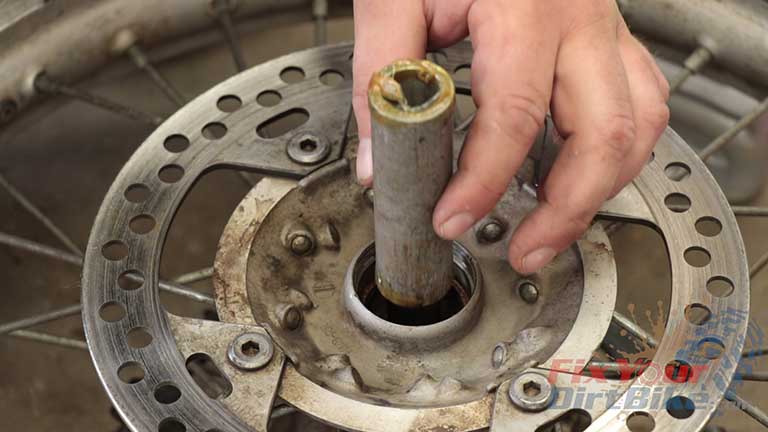
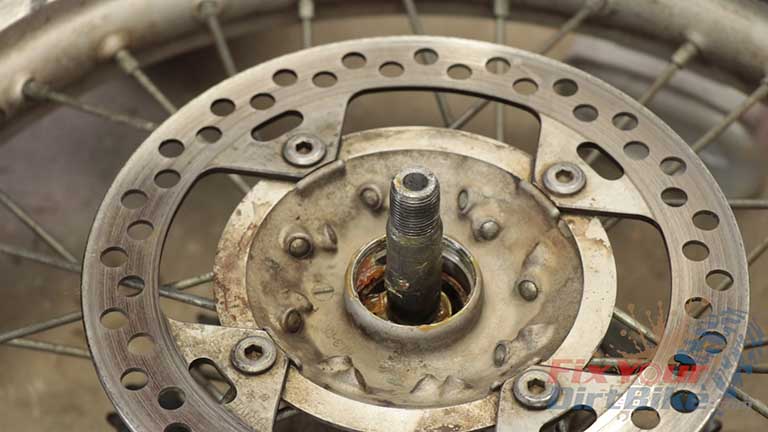
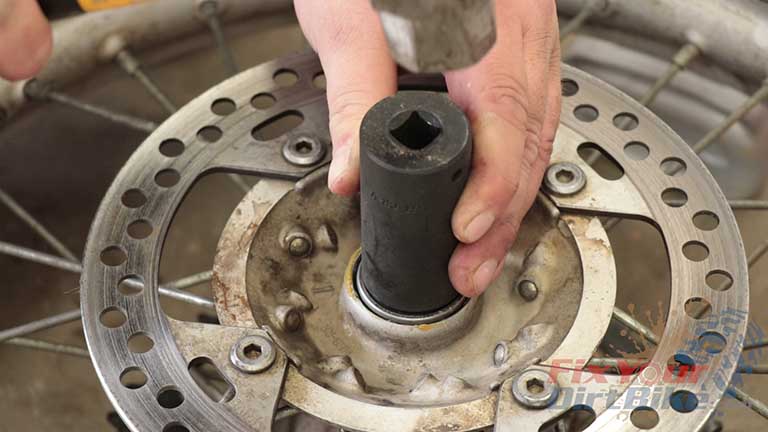
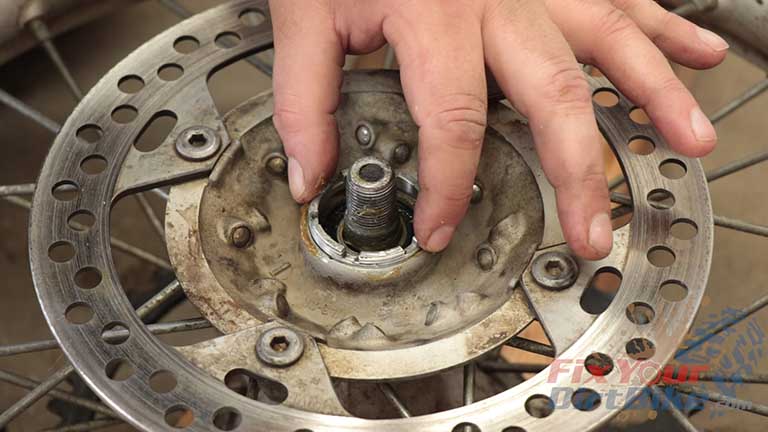
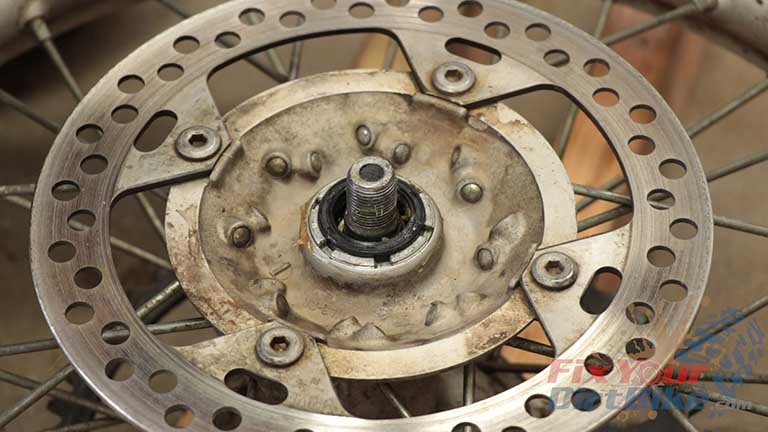
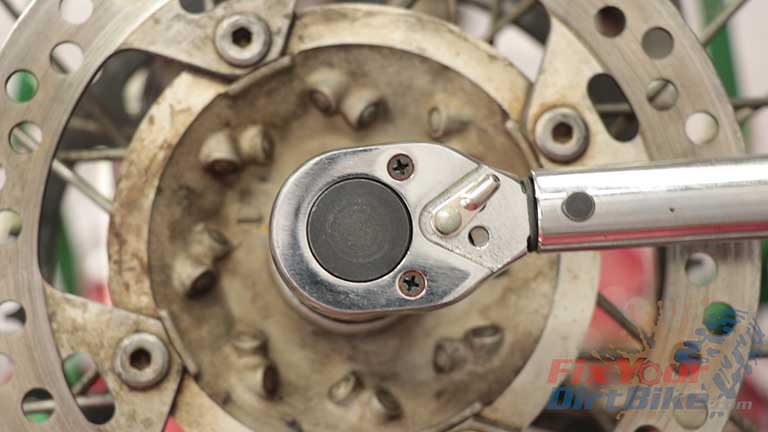
Remember to take your time, and your bearing replacement will be easy.
If you want to help take Fix Your Dirt Bike to the next level, check out my Patreon page!
If you have any questions or anything to add, please leave them in the comments or on our FaceBook page!
Keep Your Dirt Bike Running Right!

